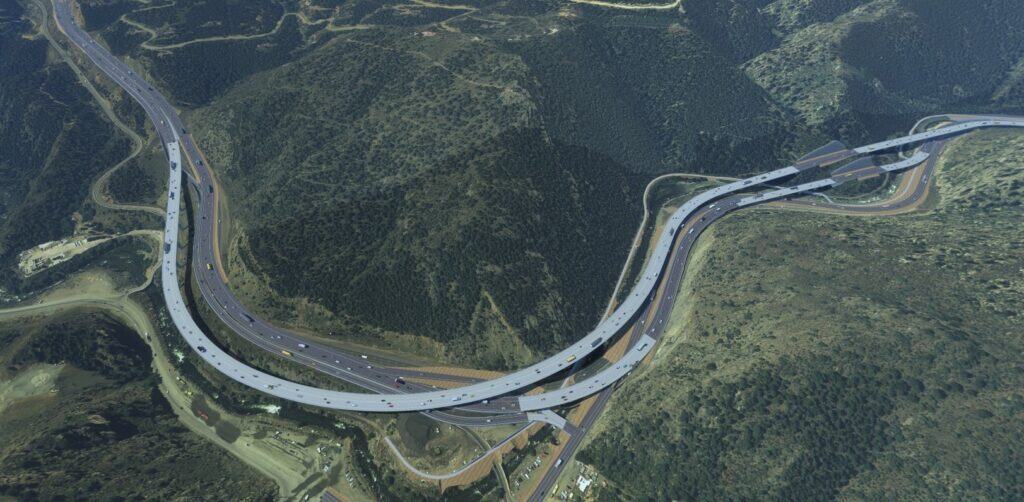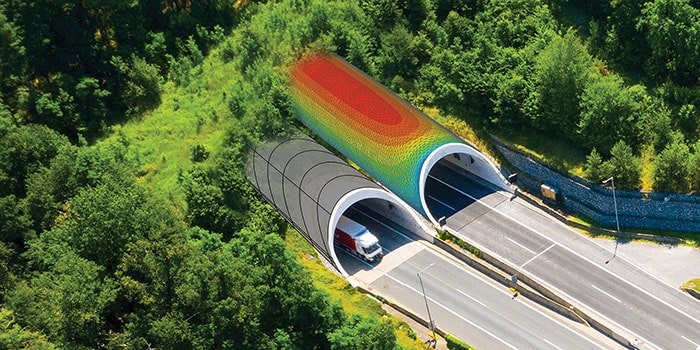A Moment of Clarity on the Run
Recently, while participating in a half marathon in Los Angeles, I found myself running under freeway overpasses. I couldn’t help but think about the engineering marvel above me—the planning, modeling, and coordination it took to bring it to life. But I also thought about the firms behind it. Were they still relying on disconnected tools and siloed workflows? Or had they embraced the digital transformation that’s reshaping our industry?
That moment crystallized something I’ve seen time and again in my work with engineering firms. Digital transformation is no longer a future goal—it’s a present necessity.
The Productivity Gap Is Growing—and It’s Risky
According to the ACEC’s 2025 Firm of the Future report, nearly half of today’s infrastructure skill requirements will evolve within five years. Yet many firms are still operating with outdated systems that limit collaboration and bury valuable data.
Here’s the reality, according to FMI’s report Big Data = Big Questions for the Engineering and Construction Industry, up to 90% of engineering data goes unused. That’s not just inefficiency—it’s a strategic liability. The loss of data brings in multiple challenges across the infrastructure lifecycle, for example:
- During the design phase: designing and visualizing infrastructure projects without factoring in relevant historical data, geospatial context, construction data, or other data that reflects real-world conditions can lead to errors and suboptimal choices.
- During the construction phase: obtaining accurate as-built documentation for infrastructure projects can be challenging due to the complexities involved with projects, frequent changes during the construction process, and poor record keeping.
- During the operations phase: small changes to one part of an asset can impact other parts of the asset.
- During the maintenance phase: inaccurate or incomplete information about an asset’s condition, location, and history can lead to inefficient maintenance planning and scheduling.
In a world where speed, sustainability, and stakeholder expectations are accelerating, firms that don’t modernize risk falling behind.
What Digital Transformation Really Means for Engineering Firms
At Bentley, we define digital transformation as the seamless integration of technology, data, and people across the infrastructure lifecycle. But what does that look like in practice?
- Integrated digital delivery – Imagine connecting design, construction, and operations in one continuous workflow. Whether it’s a highway, a water system, or a rail network, Bentley’s solutions help firms deliver complex projects with precision and speed.
- Open data ecosystems – Gone are the days of vendor lock-in. Our commitment to open standards and APIs means that your teams can collaborate in real time across disciplines, geographies, and platforms.
- Advanced technologies that empower people – From AI-powered design automation to intelligent digital twins, our tools don’t just improve outcomes—they augment your workforce and future-proof your operations.
What Digital Transformation Looks Like in Action
Across the globe, engineering firms are proving that digital transformation isn’t just a buzzword, it’s a catalyst for measurable business outcomes. Here are two examples that illustrate how Bentley’s solutions are helping firms deliver smarter, faster, and more sustainably.
Driving Coordination and Clarity: How DPWH Used Digital Twins to Streamline the NLEX-SLEX Connector Road Project
To overcome coordination challenges and accelerate delivery, the Department of Public Works and Highways (DPWH) in the Philippines turned to Bentley’s digital twin technology. By centralizing project data and enabling real-time visibility, DPWH improved collaboration across agencies, reduced delays, and empowered data-driven decision-making—setting a new standard for infrastructure delivery in the region. As a result, DPWH estimated digital workflows increased project productivity by 15% and improved equipment logistics by 40%.
Business outcomes:
- Improved coordination between government agencies and contractors through a centralized digital twin
- Reduced delays by enabling real-time access to project data and construction progress
- Enhanced visibility into asset performance and construction sequencing
- Data-driven decision-making that improved planning and execution across the project lifecycle

Transforming Mountain Mobility: How AtkinsRéalis and CDOT Digitally Reimagined the Floyd Hill Corridor
To alleviate severe congestion and improve safety along Colorado’s I-70 mountain corridor, the Colorado Department of Transportation (CDOT), in partnership with AtkinsRéalis, upgraded an eight-mile stretch through Floyd Hill. The team overcame complex topographical and environmental challenges while enhancing stakeholder coordination and sustainability, by leveraging Bentley’s collaborative 3D modeling and digital twin technology. The project exemplifies how digital delivery can drive efficiency, reduce costs, and deliver smarter infrastructure in even the most demanding environments.
Business outcomes:
- Saved USD 1.2 million managing over 1,000 file sheets using ProjectWise and Bentley’s open modeling technology
- Streamlined coordination of 11,070 files and saved $750,000 USD through a connected data environment
- Reduced effort by 97% when developing and publishing digital twins for stakeholder review
- Cut overall work hours by 50,000, and as a result reduced project costs by more than $7 million USD
These aren’t isolated wins, they’re part of a broader shift in how infrastructure is designed, delivered, and maintained. They show that when firms embrace digital transformation, the results speak for themselves.
They’re part of a global shift in how infrastructure is imagined, built, and maintained.

A Call to Engineering Leaders: The Time Is Now
Digital transformation isn’t a one-time initiative. It’s a mindset and a journey that starts at the top.
As executives, you have the power to lead this change, champion innovation, and invest in scalable technologies. You can empower your teams to work smarter, not harder.
At Bentley, we’re here to partner with you every step of the way. Because the future of infrastructure isn’t just digital, it’s already under construction. Learn more here.


